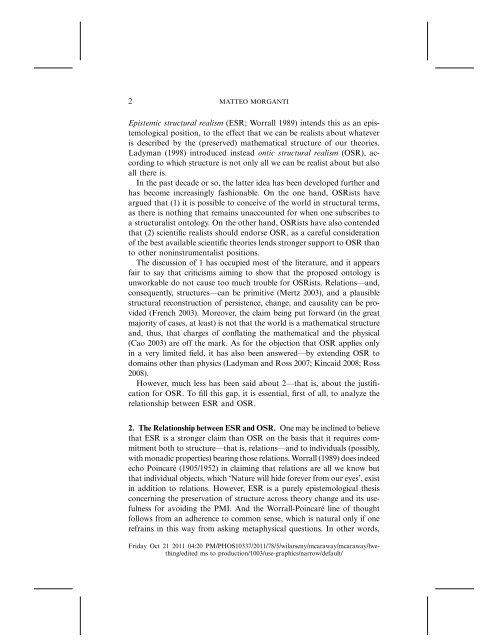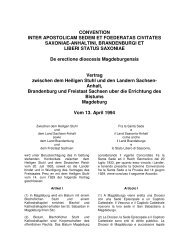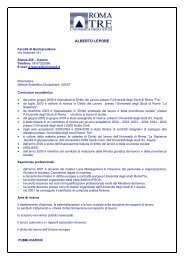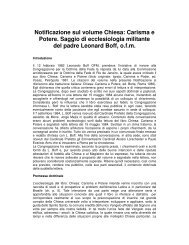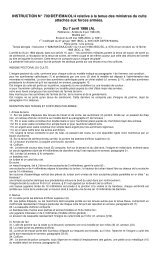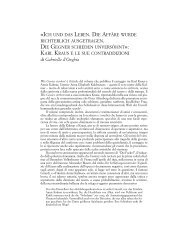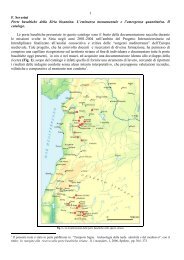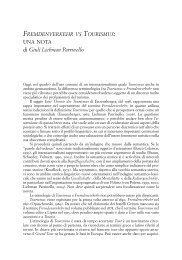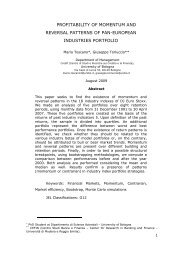Is There a Compelling Argument for Ontic Structural Realism?
Is There a Compelling Argument for Ontic Structural Realism?
Is There a Compelling Argument for Ontic Structural Realism?
You also want an ePaper? Increase the reach of your titles
YUMPU automatically turns print PDFs into web optimized ePapers that Google loves.
2 MATTEO MORGANTI<br />
Epistemic structural realism (ESR; Worrall 1989) intends this as an epistemological<br />
position, to the effect that we can be realists about whatever<br />
is described by the (preserved) mathematical structure of our theories.<br />
Ladyman (1998) introduced instead ontic structural realism (OSR), according<br />
to which structure is not only all we can be realist about but also<br />
all there is.<br />
In the past decade or so, the latter idea has been developed further and<br />
has become increasingly fashionable. On the one hand, OSRists have<br />
argued that (1) it is possible to conceive of the world in structural terms,<br />
as there is nothing that remains unaccounted <strong>for</strong> when one subscribes to<br />
a structuralist ontology. On the other hand, OSRists have also contended<br />
that (2) scientific realists should endorse OSR, as a careful consideration<br />
of the best available scientific theories lends stronger support to OSR than<br />
to other noninstrumentalist positions.<br />
The discussion of 1 has occupied most of the literature, and it appears<br />
fair to say that criticisms aiming to show that the proposed ontology is<br />
unworkable do not cause too much trouble <strong>for</strong> OSRists. Relations—and,<br />
consequently, structures—can be primitive (Mertz 2003), and a plausible<br />
structural reconstruction of persistence, change, and causality can be provided<br />
(French 2003). Moreover, the claim being put <strong>for</strong>ward (in the great<br />
majority of cases, at least) is not that the world is a mathematical structure<br />
and, thus, that charges of conflating the mathematical and the physical<br />
(Cao 2003) are off the mark. As <strong>for</strong> the objection that OSR applies only<br />
in a very limited field, it has also been answered—by extending OSR to<br />
domains other than physics (Ladyman and Ross 2007; Kincaid 2008; Ross<br />
2008).<br />
However, much less has been said about 2—that is, about the justification<br />
<strong>for</strong> OSR. To fill this gap, it is essential, first of all, to analyze the<br />
relationship between ESR and OSR.<br />
2. The Relationship between ESR and OSR. One may be inclined to believe<br />
that ESR is a stronger claim than OSR on the basis that it requires commitment<br />
both to structure—that is, relations—and to individuals (possibly,<br />
with monadic properties) bearing those relations. Worrall (1989) does indeed<br />
echo Poincaré (1905/1952) in claiming that relations are all we know but<br />
that individual objects, which ‘Nature will hide <strong>for</strong>ever from our eyes’, exist<br />
in addition to relations. However, ESR is a purely epistemological thesis<br />
concerning the preservation of structure across theory change and its usefulness<br />
<strong>for</strong> avoiding the PMI. And the Worrall-Poincaré line of thought<br />
follows from an adherence to common sense, which is natural only if one<br />
refrains in this way from asking metaphysical questions. In other words,<br />
Friday Oct 21 2011 04:20 PM/PHOS10337/2011/78/5/wilarseny/mcaraway/mcaraway/lwething/edited<br />
ms to production/1003/use-graphics/narrow/default/


